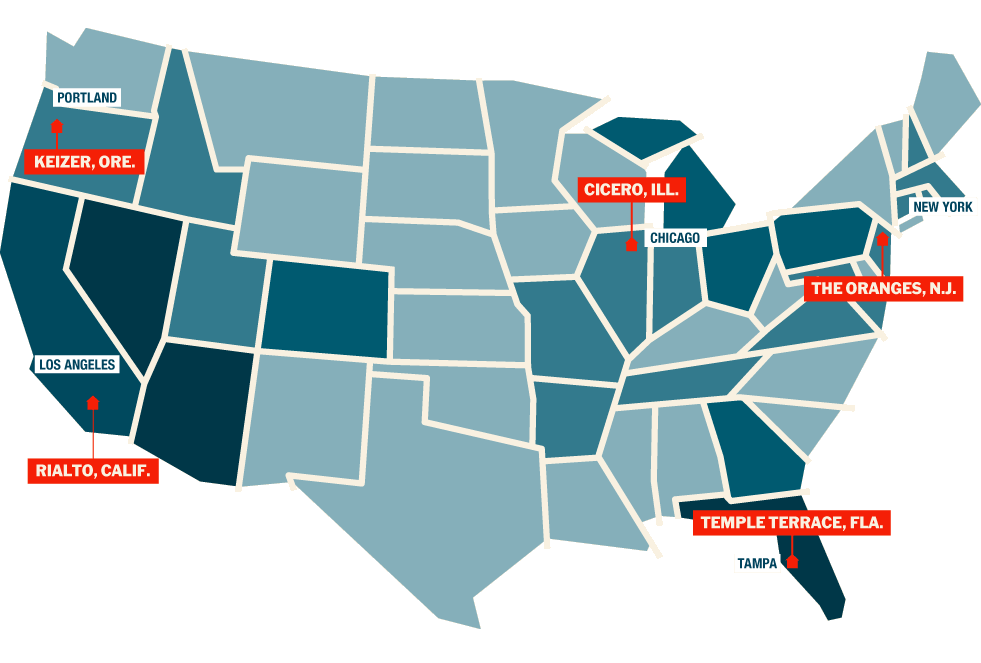Its been a month, and I have made some big strides towards my final capstone research question. I've almost picked a site! When I am in CLE next week for our Thanksgiving holiday, I have two goals: eat mashed potatoes and find a few block site in a neighborhood of Cleveland to use as my capstone canvas. Below you can read my most recent proposal "draft" (aka ramblings).
When I wrote this draft, I had just started to narrow down by site qualities, and at this point, I think i am almost set on choosing a neighborhood in Cleveland. I always made fun of my moms bumper sticker ("My heart's in Cleveland"), but I do understand the love of the CLE, and why not apply my knowledge earned over years of hard work to a place with such great potential?
Here goes nothin'
Elevator
Pitch: Take a quarter square mile
(or a specific urban fringe neighborhood) site that has been dramatically
cleared because of foreclosures after shrinking populations and renew a sense
of place and a sense of community on multiple scales. The site must be on an urban fringe, and will therefore be
reconnected through design to an intact community via human interaction scale,
landscape scale, and economic scale
Important Site Qualities:
suffering from a shrinking population
because of a loss of industry or change in economic impacter to the city
on the fringe of a currently developed area
with an intact community structure
exhibit an excess of open space because of
abandoned building tear down
In the past few years
foreclosures have rattled communities across the globe. Communities entire structures are
changed by the shrinking of populations and changing of economic climates. Within shrinking communities homes and
in extreme cases entire blocks can become abandoned. Abandonment of homes leads to a multitude of problems; fewer
“eyes on the street,” built structures falling apart, dangerous untamed natural
areas, community disconnection, fewer tax payers to support public works,
schools and other amenities, and expensive infrastructure traveling out to
areas that are no longer in need, etc.
To limit the danger of decrepit buildings being left to rot, and
possibly pose danger for people still residing in the neighborhoods affected,
cities are spending billions of dollars to tear down foreclosed and abandoned
homes. What is left are
communities with an excess of open space and declining opportunities for human
interaction.
This excess of open
space that is created will be my capstone canvas. I will be taking a quarter square mile (or a specific urban
fringe neighborhood) site that has been dramatically cleared because of foreclosures
after shrinking populations and renew a sense of place and a sense of community
on multiple scales. The site will
be reconnected through design to an intact community via human interaction
scale, landscape scale, and economic scale.
Research Questions:
How can landscape
architecture work to renew a sense of community in a place that has been
lost? How is that sense of
community created? This question
is one that has been a motivator for landscape architects for generations. Since the beginning of the profession a
main goal has been using the landscape to create spaces people want to inhabit
or inhabit in specific ways.
How can open space in
debilitated communities be used to successfully create informal economies and a
better quality of life for a neighborhoods inhabitants while also reconnecting
said community to an existing formal economy and developed area.
The kinds of problem
spaces I am tackling in my capstone will be an issue for years to come as
population needs change and best-laid plans go to waste. Solutions on how to strengthen
communities and creative ways to reconnect lost places into the common society
grid will be necessary until all development is deemed “resilient.”
The research I have
done up to this point has been narrowing my focus and creating a backdrop from
which I will be able to design.
Programming needs have become more apparent as I move through my
research, but I have yet to arrive at a point where I feel comfortable
physically designing on a site. I
see myself choosing a site over the Thanksgiving break when I will have chances
to explore possible site opportunities in Detroit, Cleveland, and Buffalo. Once the site is chosen, I look forward
to being able to apply all of the research I have completed up to this point,
and begin to understand all that was written in combination with the
physicalities of the site.
Research Topics:
- Causes behind the foreclosure crisis
- Affects of foreclosure on communities
across the globe
- Informal economies in developing countries
- Previously used solutions for reconnecting
communities
- Historic planning practices for suburban
development
- Greenways and ecological habitat in urban
areas
- Shrinking cities past and present
- Infrastructure connections in urban areas
- Shared infrastructure
Program Goals:
- Renew a sense of place
- Increase quality of life
- Connect to developed economy
- Connect to exisiting community
- Connect regionally to alternative modes of
transportation
- Move away from a car based structure
- Use “new” greenfield space to support
human + non-human habitat
- Create a resilient way of life
- Create a flexible scaffolding off of which
to build that accommodates changing needs
Important Definitions
Foreclosure - a bank or other secured creditor selling or
repossessing a parcel of real property (immovable property) after the owner has
failed to comply with an agreement between the lender and borrower called a
"mortgage" or "deed of trust."
Abandonment – something abandoned by its owner with the
intention of not retaking it
Community -
a social unit larger than a small village that shares common values
human
interaction scale – the
level of community at which people have day to day and human to human contact,
interactions
landscape scale
– a understand of the
landscape that combines both the lands physical origins and the cultural
overlay of human presence
economic scale – the level of community at which money is
passed and humans make a livelihood
urban fringe - the transition zone where densely urban and
suburban areas clash
excess open
space – landscape
parcels with no program and no necessary need at this point in time in a
certain neighborhood










